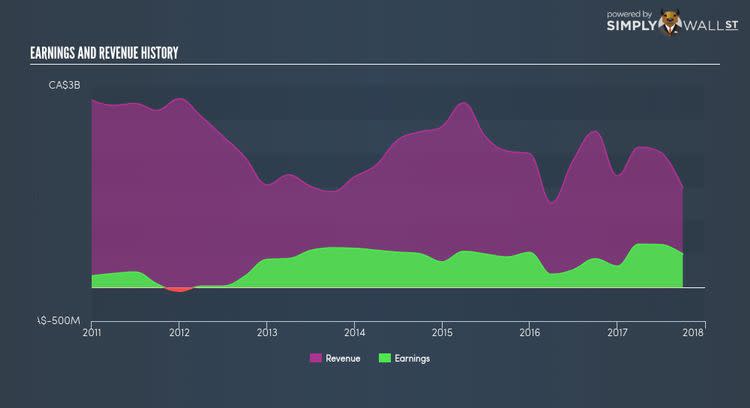Where E-L Financial Corporation Limited (TSX:ELF) Stands In Terms Of Earnings Growth Against Its Industry

After looking at E-L Financial Corporation Limited’s (TSX:ELF) latest earnings announcement (30 September 2017), I found it useful to revisit the company’s performance in the past couple of years and assess this against the most recent figures. As a long term investor, I pay close attention to earnings trend, rather than the figures published at one point in time. I also compare against an industry benchmark to check whether E-L Financial’s performance has been impacted by industry movements. In this article I briefly touch on my key findings. See our latest analysis for ELF
Did ELF’s recent EPS Growth beat the long-term trend and the industry?
I use the ‘latest twelve-month’ data, which annualizes the latest 6-month earnings release, or some times, the latest annual report is already the most recent financial data. This technique allows me to analyze different companies on a similar basis, using the latest information. E-L Financial’s most recent bottom-line is CA$496M, which compared to the previous year’s level, has risen by 16.54%. Given that these figures may be relatively short-term, I have calculated an annualized five-year figure for ELF’s net income, which stands at CA$368M. This suggests that, on average, E-L Financial has been able to consistently grow its bottom line over the past couple of years as well.
What’s enabled this growth? Let’s see if it is merely attributable to industry tailwinds, or if E-L Financial has seen some company-specific growth. In the past couple of years, E-L Financial expanded bottom-line, while its top-line fell, by successfully managing its costs. This has led to to a margin expansion and profitability over time. Scanning growth from a sector-level, the Canadian insurance industry has been growing its average earnings by double-digit 20.85% over the past year, and a more subdued 8.61% over the previous few years. This means that whatever tailwind the industry is profiting from, E-L Financial has not been able to realize the gains unlike its industry peers.
What does this mean?
While past data is useful, it doesn’t tell the whole story. Positive growth and profitability are what investors like to see in a company’s track record, but how do we properly assess sustainability? You should continue to research E-L Financial to get a more holistic view of the stock by looking at:
1. Financial Health: Is ELF’s operations financially sustainable? Balance sheets can be hard to analyze, which is why we’ve done it for you. Check out our financial health checks here.
2. Valuation: What is ELF worth today? Is the stock undervalued, even when its growth outlook is factored into its intrinsic value? The intrinsic value infographic in our free research report helps visualize whether ELF is currently mispriced by the market.
3. Other High-Performing Stocks: Are there other stocks that provide better prospects with proven track records? Explore our free list of these great stocks here.
NB: Figures in this article are calculated using data from the last twelve months, which refer to the 12-month period ending on the last date of the month the financial statement is dated. This may not be consistent with full year annual report figures.
To help readers see pass the short term volatility of the financial market, we aim to bring you a long-term focused research analysis purely driven by fundamental data. Note that our analysis does not factor in the latest price sensitive company announcements.
The author is an independent contributor and at the time of publication had no position in the stocks mentioned.

